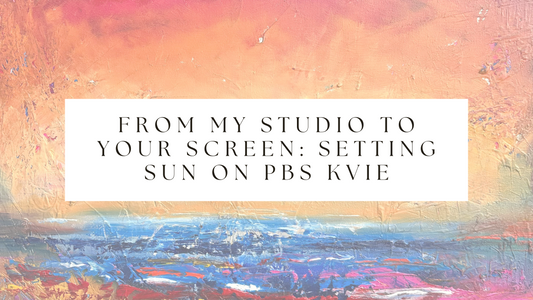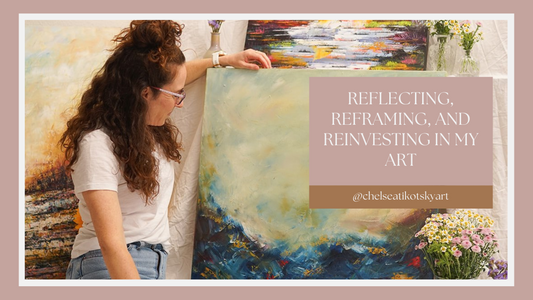I turned 40 this year, and looking back over the past two years, I’m struck by how much has changed—and how much I’ve grown.
After undergoing major knee surgery, I was forced to truly slow down and reflect on what matters most to me. While I’ve always had a steady 9–5 job, I came to a clear realization during that time: my real passion—the work that makes me feel most alive—is painting.
Before my knee problems began, I was also a dedicated marathoner, consistently improving my time with every race. I had finally begun to reach a level in my running that I never imagined possible, all while continuing to create new artwork. So when a doctor told me I might never run again, it was more than just a physical setback—it was a profound blow to my identity. For a long time, that news sent me into a spiral. I kept painting, but I was also grieving the loss of a part of myself that had defined me for years.
I can’t remember if it was the day of my surgery or the day after, but I made a quiet, determined decision: I would pour everything I had into recovery—and into my art.
That decision brought clarity. I began to see that I’d been holding onto patterns and habits in my art practice that weren’t truly serving me. At the time, I thought those routines were helping me progress, but in truth, they were rooted in fear, self-doubt, and the quiet hum of imposter syndrome that so many artists carry with them.
It was frustrating—wanting to grow, wanting to let go of what didn’t work, yet finding myself stuck in the same cycles. The universe was nudging me, gently but persistently, to pay attention. Eventually, I had to admit that what I was clinging to was really my own self-doubt.
The breakthrough came when I started reframing those moments. Instead of seeing them as failures, I began to view them as guidance—little pushes to redirect me toward the path I was meant to be on. This shift has really helped me to see things as positives versus negatives
One of the most liberating realizations was that I don’t need to rush. For years, I told myself I needed to paint faster, be “further along,” or constantly prove myself. But that only led to stress and frustration. This year, I gave myself permission to slow down. If I only paint one flower in a day, that’s enough. Art doesn’t have to be a race—it’s about presence, joy, and connection.
Another important lesson I’ve learned is the power of saying “no.” For a long time, I was afraid to turn things down, worried I’d miss out on an opportunity—even when my gut told me it wasn’t the right fit. Now, I see things differently. Saying no isn’t about closing doors; it’s about creating space—for better opportunities, for alignment, and ultimately, for becoming a better artist and a more grounded person.
These small but meaningful shifts—slowing down, letting go of fear, trusting my own timing, and paying attention to the signs around me—have lifted a huge weight off my shoulders. I’ve come to realize that I don’t have to suffer to be an artist. I can find joy in the process, even with its ups and downs. And that’s what I hope comes through in my work: that happiness isn’t some distant, hard-earned reward. It’s available now, even in small, fleeting moments.
That’s the message I want my art to carry: that beauty, ease, and joy are already here, waiting for us. We just have to allow ourselves to notice them—even when they show up in small, quiet, magical ways.
Have you ever let go of fear to create space for what truly matters to you?



